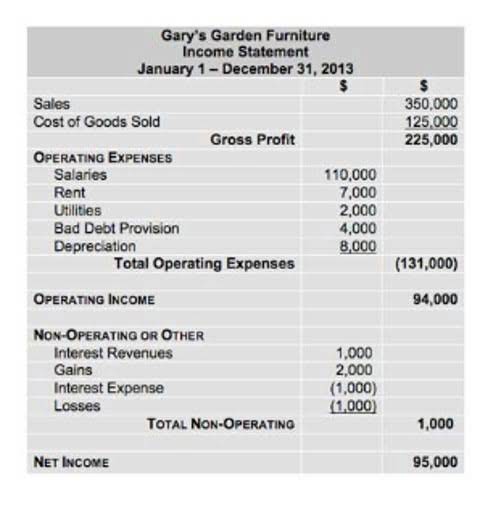
Bookkeeping is an essential aspect of any business, big or small. It involves keeping track of financial transactions, recording expenses, and ensuring that the business’s finances are in order. While every business needs bookkeeping to some degree, some businesses require it more than others. In this blog post, we’ll explore which businesses need bookkeeping the most. Take past information to predict the company’s financial future.
Related Searches in Salt Lake City, UT
In neighboring Minnesota, the home insurance industry has lost money in six of the last seven years, and those losses are growing. Insurers there are also pulling back, according to Tony J. Larson, senior vice president of personal lines coverage at Christensen Group Insurance, a brokerage. Hail damaged the roof of Dr. Brandi Mace Storm’s home near Des Moines last year. After months of haggling, her insurance company, Pekin, sent a check to cover the repairs.
Your Utah CPA Offering Small Business Bookkeeping, Payroll, Tax & Accounting Service
California is requiring that insurers give discounts to homeowners who install fire-resistant roofs or make other changes to reduce their risk, with the idea that insurers will have to pay out less money as a result. Minnesota has likewise required insurers to offer discounts to people who make their homes more resilient against storms; Kentucky and Georgia recently passed https://www.bookstime.com/ similar legislation. While every business is different, most of our clients see a return on investment on our fees of times by utilizing our bookkeeping and accounting services in and around Salt Lake City and Park City, Utah. Running a small business is difficult enough, and it quickly becomes overwhelming when you add bookkeeping, taxes, and accounting to the list.
Tanner Services
Combined ratios data was provided by AM Best, based on regulatory filings from insurance companies. Our team is happy to help with your business and personal income taxes. No matter your plan, all salt lake city bookkeeping federal and state year-end business income taxes are included. At Mazuma, we provide Utah small businesses with comprehensive accounting, tax, and bookkeeping services at affordable prices.
Top 10 Accountants near Salt Lake City, UT

Accountants are financial professionals who have received an accounting degree from a four-year university or college. By trade, accountants prepare, maintain and examine the financial statements of an individual, business or institution. An accountant prepares reports for tax purposes and can also perform audits of public companies. Common tasks include creating budgets, analyzing profits and losses of a company, processing payroll, preparing financial statements for company leadership, and creating and maintaining financial database systems for a company.
As an independent accounting firm, it aims to resolve complex issues concerning taxes, mergers, information security, and business formations. Its professionals handle assurance engagements, such as buy or sell-side due diligence, internal audits, and IFRS consulting, for clients from different industries, including e-Commerce. Tanner was ranked as one of the fastest-growing accounting firms in 2021 on Accounting Today’s list, a publication that recognizes CPA firm performance. SLC Bookkeeping helps hundreds of businesses from restaurants to real estate investors to law firms gain solid financial footing through accurate reconciliation, reporting, forecasting and strategic planning. Learn more about the services we offer and get in touch with us today.

Interested in our fractional CFO or tax services?

Federal officials increasingly worry that states will eventually turn to Congress for assistance, putting all Americans on the hook. Mr. Langston spent months trying to find another company to insure the townhouses, on a quiet cul-de-sac at the edge of Cedar Rapids, that belong to members of his homeowners association. Without coverage, “if we were to have damage that hit all 17 units, we’re looking at bankruptcy for all of us,” he said. These houses and thousands more also lost their coverage as some insurance companies pulled out of Iowa altogether. Kirkham with the Utah Association of Realtors said that could be a good idea.
In the West, climate change has dried out wooded areas, making them increasingly susceptible to wildfires. In Arizona and Washington State, insurers’ annual losses for homeowners coverage have more than doubled over the past decade, before accounting for inflation. Tracking the shifting insurance market is complicated by the fact it is not regulated by the federal government; attempts by the Treasury Department to simply gather data have been rebuffed by some state regulators. The growing tumult is affecting people whose homes have never been damaged and who have dutifully paid their premiums, year after year. Cancellation notices have left them scrambling to find coverage to protect what is often their single biggest investment. As a last resort, many are ending up in high-risk insurance pools created by states that are backed by the public and offer less coverage than standard policies.
- With Mazuma, you can be confident you are getting all the deductions you deserve.
- We pride ourselves on doing the job right and making sure you legally pay the least amount of tax for your situation by taking advantage of all the tax credits and deductions available to you.
- We scored Salt Lake City Accountants on more than 25 variables across five categories, and analyzed the results to give you a hand-picked list of the best.
- “These guys are worth every penny, simply for the lowered stress in my life with some of the forensic accounting and ongoing accounting they do to keep my business books up to date.”
- Whether you decide to outsource both your bookkeeping and accounting services or just one, you can be confident that we’ll provide professional services designed to meet your nonprofit’s specific needs.
- Platform Tax & Consulting is an accounting firm that has been serving clients in Salt Lake City and nearby areas for over 30 years.
- Its professional team also offers consultation services regarding employer-sponsored retirement plans.
- Tanner is a team of accountants and advisors that serves companies in and around Salt Lake City.
- Even where homes are more affordable in other states, the median renter household income is too low to avoid a mortgage being a cost burden.
- Make Mazuma Your Utah small business accountant & bookkeeping service.
- Home prices are down from their peak in February 2022, but the median sales price is still close to $500,000.
“There would have been people, if swimming pools were closed for that year, who didn’t get swim lessons and so might have been behind in getting swim lessons,” Houry said. Jobs with different levels of education may pay very differently. If your nonprofit is looking to hire a fractional CFO, Jitasa’s Strategic Advisory Team (J-SAT) is equipped to help you work through your toughest financial challenges, from forecasting cash flows to analyzing internal controls. Click the button below to schedule a day/time that works for you.
You can progress in your career and do meaningful work here without sacrificing what matters most. We pride ourselves in being able to supply our clients with the information they need to make wise financial decisions. Wholesale Discount pricings are guaranteed for life by QuickBooks Online Platform. If you want to upgrade or downgrade pricing will still be wholesale discount. Pricing changes may occur, but you will still get the Wholesale Discount price.